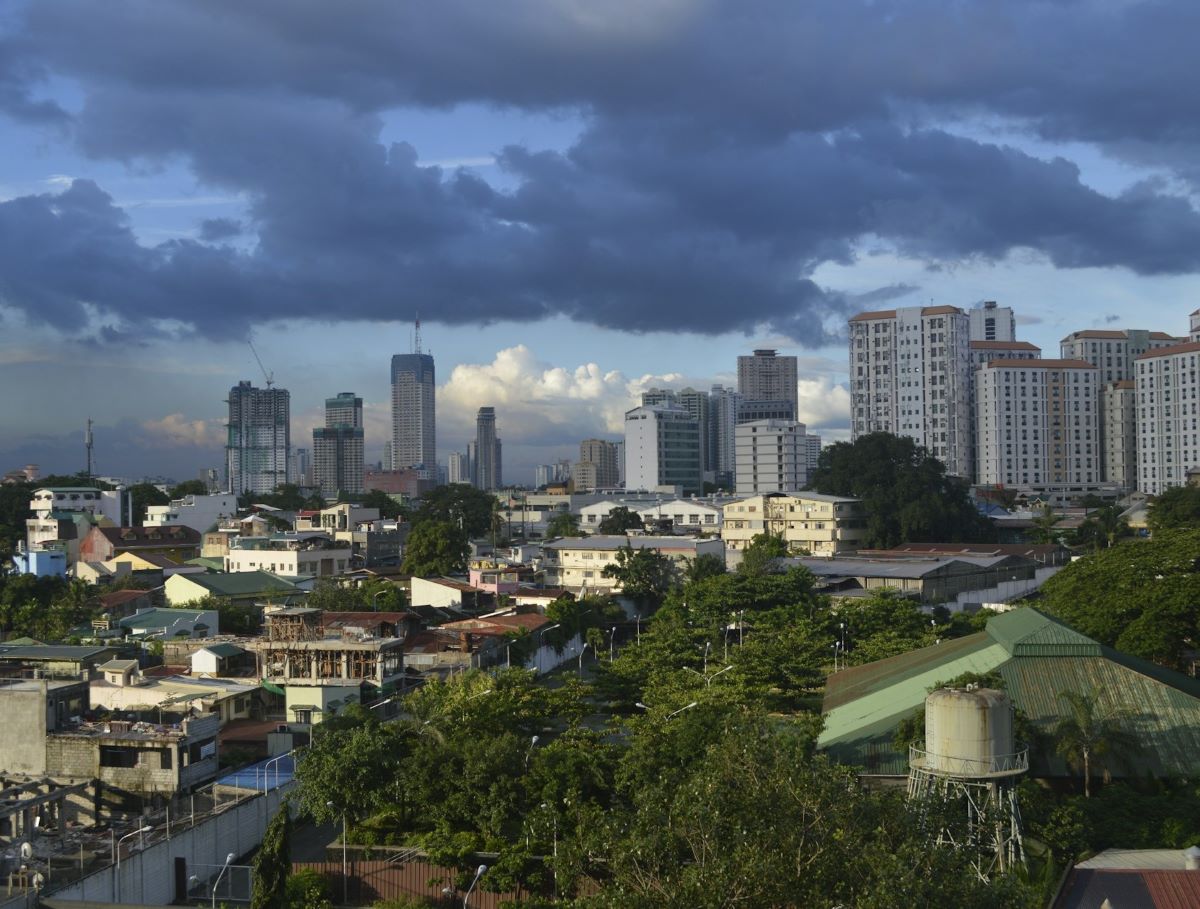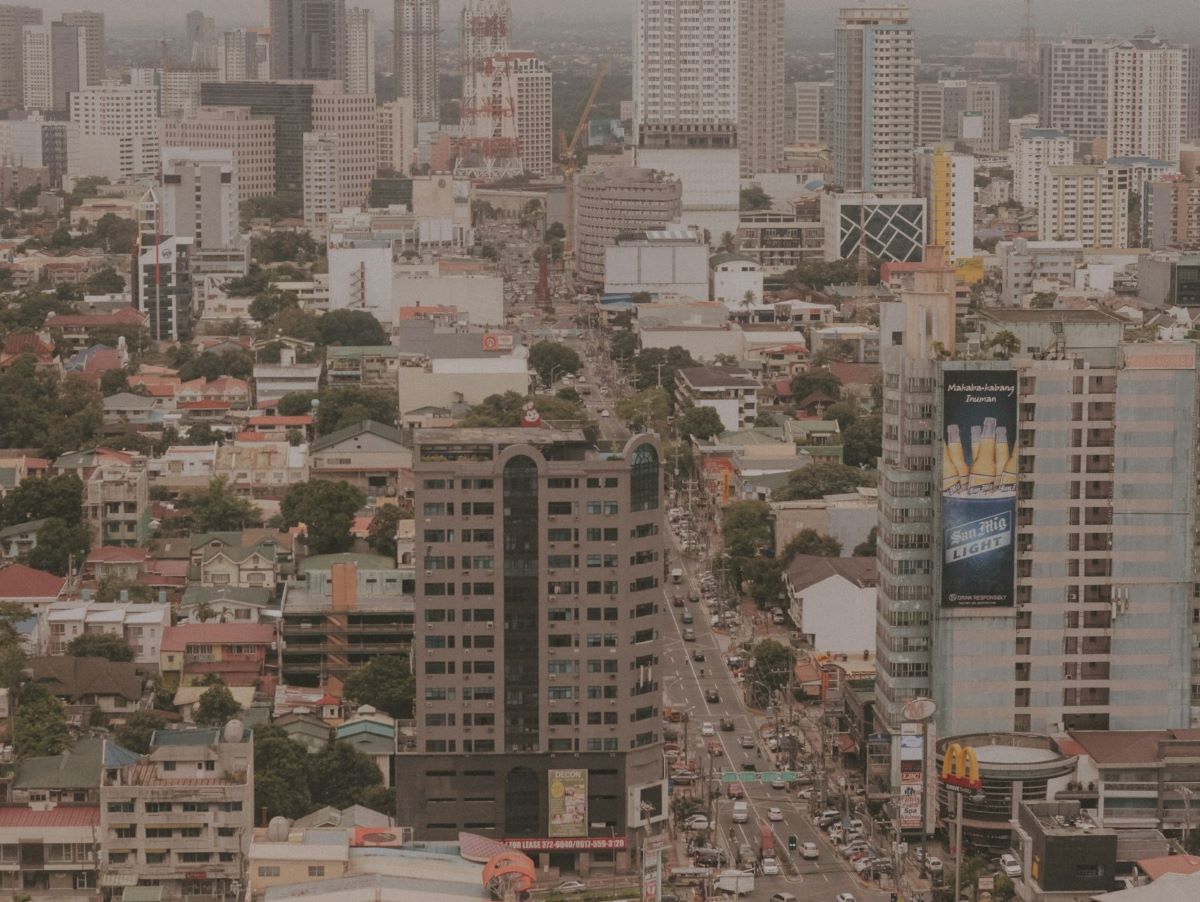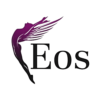Table of Contents
ToggleIntroduction
Recruiting top talent is crucial for any business seeking to establish or expand its presence in the Philippines. The country’s unique labour market dynamics present both opportunities and challenges for employers. With a population of over 100 million people and a literacy rate exceeding 95%, the Philippines offers a large, skilled, and diverse workforce. This demographic advantage is further bolstered by a youthful population, with a median age of around 24 years, which promises a steady influx of young, energetic workers into the labour market.
Moreover, the Philippines is renowned for its high level of English proficiency, ranking as one of the top countries in Asia for English language skills. This proficiency is a significant advantage for multinational companies looking to establish operations in the region, particularly in sectors such as business process outsourcing (BPO), information technology, and customer service, where communication is key.
However, navigating the local employment landscape requires a nuanced understanding of several factors:
- Regional Wage Variations: The minimum wage in the Philippines varies significantly across different regions and job scopes. For example, the National Capital Region (NCR) has a higher minimum wage than other areas, reflecting its status as the country’s economic and business hub. Employers must know these regional differences to set competitive and fair compensation packages.
- Sector-Specific Demands: Different sectors have unique demands and challenges. The BPO industry, for instance, often competes fiercely for skilled workers, offering higher wages and extensive benefits to attract top talent. In contrast, the manufacturing and agricultural sectors may have different workforce dynamics and compensation structures.
- Cultural Nuances: Understanding Filipino culture is vital for effective recruitment and retention. Filipinos place a high value on family, community, and hierarchical respect. These cultural aspects influence job satisfaction and employee engagement, and companies that acknowledge and integrate these values into their workplace practices can significantly enhance their attractiveness as employers.
- Educational Attainment and Skill Levels: The Philippines boasts a robust educational system emphasising vocational and technical training. This results in a workforce that is not only literate but also possesses specialised skills tailored to various industries. Employers can benefit from this by aligning their recruitment strategies with the educational strengths of the local workforce.
- Labour Laws and Regulations: The Philippine government has established comprehensive labour laws to protect workers’ rights and promote fair employment practices. Compliance with these regulations is essential for maintaining a good reputation and avoiding legal complications. Understanding the legal framework surrounding employment contracts, termination processes, and employee benefits is critical for successful recruitment and retention.
This article explores effective recruitment strategies tailored to hiring in the Philippines, providing insights to help employers attract and retain the best talent. By understanding and leveraging the unique characteristics of the Philippine labour market, businesses can create a strong, motivated, and productive workforce that drives organisational success.
Source: Philippine Statistics Authority, Philippine Statistics Authority, Human Resource Online, and Enshored
Understanding the Labour Market
Regional Distribution and Minimum Wages
The Philippines comprises 17 regions, each with its own economic conditions, cost of living, and wage standards. These regions are further subdivided into provinces, cities, and municipalities, contributing to the country’s diverse economic landscape. Understanding these regional differences is crucial for setting competitive salary packages that attract local talent.
National Capital Region (NCR)
The National Capital Region, or Metro Manila, is the Philippines’ economic, political, and cultural hub. It boasts the highest minimum wage in the country, ranging from PHP 537 to PHP 645 per day, depending on the industry. This higher wage rate reflects the region’s higher cost of living and concentration of business and commercial activities. NCR is home to numerous multinational corporations, financial institutions, and BPO companies, making it a highly competitive job market.
Calabarzon and Central Luzon
Adjacent to NCR are the regions of Calabarzon and Central Luzon, which are significant industrial and manufacturing hubs. Calabarzon, comprising the provinces of Cavite, Laguna, Batangas, Rizal, and Quezon, has a minimum wage range of PHP 385 to PHP 520 per day. Central Luzon, which includes provinces like Pampanga and Bulacan, has a minimum wage range of PHP 422 to PHP 500 per day. These regions attract businesses due to their proximity to Metro Manila, skilled workforce, and lower operational costs than capital.
Visayas Regions
The Visayas group of islands, including regions such as Western Visayas, Central Visayas, and Eastern Visayas, has varying minimum wage rates reflecting their diverse economic activities. For example, Central Visayas, which includes Cebu City—a major economic centre—has a minimum wage range of PHP 415 to PHP 468 per day. These regions are known for their tourism, agriculture, and emerging IT sectors.
Mindanao Regions
Mindanao, the southernmost major island, encompasses Northern Mindanao, the Davao Region, and Soccsksargen. The minimum wage in these regions varies significantly, with Northern Mindanao offering a range from PHP 393 to PHP 438 per day, depending on the industry. Mindanao is rich in natural resources and has a growing agro-industrial sector, but it also faces challenges, such as political instability in some areas.
Source: WageIndicator and Department of Labor and Employment
Regional Wage Variations
Several interrelated factors influence the variations in minimum wages across different regions of the Philippines. These factors shape the economic landscape and determine the wage standards set by regional wage boards.
Cost of Living
The cost of living varies significantly across different regions and has a direct impact on minimum wage levels. Urbanised and economically developed areas like the National Capital Region (NCR) and Cebu City tend to have higher living costs driven by factors such as housing, transportation, and basic goods. For example, in Metro Manila, the average rent for a one-bedroom apartment in the city centre is 27,480.84 pesos. Additionally, higher grocery and utility expenses further contribute to the overall cost of living, requiring higher wages in order to maintain a decent quality of life.
In contrast, regions like Mindanao have a lower cost of living. For example, in Davao City, the rent for a similar apartment is significantly lower, averaging around PHP 18,000 per month. This difference in living expenses necessitates varied wage levels to ensure that workers in each region can afford their basic needs.
Source: Numbeo
Economic Activities
Regions with robust industrial and commercial activities offer higher wages to attract and retain skilled workers. For instance, Cebu has emerged as a major tech hub in the Philippines. The city’s tech industry is projected to grow significantly, driven by sectors such as software development, cybersecurity, and data analysis. Major events like the Hybrid Blockchain Expo and the Innovation and Technology Summit highlight Cebu’s role in fintech and AI advancements, attracting both local and foreign investments.
Companies like Symph and Payruler, based in Cebu, are not only thriving locally but also expanding globally, showing the region’s capability to nurture successful tech enterprises. The surge in digital transformation projects and the establishment of new tech parks and BPO centres have created a competitive job market, necessitating higher wages to lure skilled professionals.
On the other hand, regions such as Calabarzon and Central Luzon are known for their industrial estates and manufacturing plants. Recent developments include the establishment of new factories by multinational companies, which has boosted local employment and driven wages up to attract the necessary skilled labour.
Source: Board of Investments Philippines and Nucamp
Labour Supply and Demand
The concentration of businesses and industries in certain areas affects the labour supply and demand dynamics. In regions with high numbers of companies, competition for workers drives wages up. Cebu’s tech scene exemplifies this dynamic. With a booming demand for skills like data analytics, cybersecurity, and cloud computing, companies are offering competitive salaries and benefits to attract top talent. The employment growth in Cebu’s tech sector has been significant, with a 20% year-over-year increase, underscoring the high demand for skilled workers.
Moreover, the demand for data scientists and analysts in Cebu has skyrocketed, driven by local businesses and global tech giants setting up shop in the city. This demand has outpaced the supply of qualified candidates, prompting educational institutions to enhance their tech programs and focus on emerging skills like AI, IoT, and blockchain.
In contrast, agricultural regions like those in Mindanao experience different dynamics. There has been a growing demand for skilled agricultural workers due to the introduction of new agri-business initiatives. These initiatives focus on sustainable farming and export-oriented agriculture, which require higher-skilled labour, thereby gradually increasing wages in the region.
Source: Nucamp and National Economic and Development Authority

Government Policies
Regional wage boards in the Philippines are responsible for regularly reviewing and adjusting minimum wages to ensure they meet the needs of workers. These boards consider economic indicators such as inflation rates, cost of living, and regional economic performance. The Department of Labor and Employment (DOLE) oversees these wage boards, ensuring they operate within the legal framework and address the socio-economic conditions of each region.
Recently, wage adjustments have been implemented in several regions to address the rising cost of living and inflation. For example, the DOLE proposed increasing the minimum wage for Central Visayas by October 2024 in response to the economic pressures workers face. This proposal came after extensive consultations with labour groups, employers, and government agencies, reflecting a collaborative approach to wage determination.
The Philippine government has also introduced policies to support the workforce during economic transitions. Implementing the TRAIN (Tax Reform for Acceleration and Inclusion) law, for instance, aims to reduce income tax rates for low- and middle-income earners, effectively increasing their take-home pay. This policy complements the efforts of regional wage boards by providing additional financial relief to workers.
Government policies also focus on improving employment standards and protecting workers’ rights. Initiatives such as the “Build, Build, Build” infrastructure program have created numerous job opportunities nationwide, particularly in construction and allied industries. These projects boost employment and stimulate economic growth, contributing to higher wage levels in affected regions.
Source: Sun Star, Department of Labor and Employment, National Tax Research Center, and Philippine Development Plan
By understanding and adapting to these factors, employers can develop effective recruitment strategies that align with regional economic conditions and labour market dynamics. This approach helps attract and retain top talent and ensures compliance with local wage regulations.
Sector Distribution and Minimum Wages
The sectoral distribution of the workforce significantly impacts wage structures in the Philippines. Different industries offer varying wage levels depending on the demand for specific skills and the economic activities predominant in each sector.
Business Process Outsourcing (BPO)
The BPO sector is a major employer in the Philippines, often offering wages higher than the minimum due to the high demand for skilled workers. The average monthly salary for employees in the BPO sector is around PHP 30,000, significantly higher than the minimum wage in many regions. This sector’s attractiveness stems from the need for English proficiency and technical skills, making it one of the more lucrative employment options in the country. Additionally, the Philippines’ BPO industry is renowned for providing comprehensive benefits, including health insurance, performance bonuses, and opportunities for career advancement, which further enhance the overall compensation package.
Information Technology (IT)
The IT sector is another high-paying industry in the Philippines. The average salary for IT professionals is about PHP 44,800 per month, reflecting the specialised skills required in this field. IT roles such as software development, cybersecurity, and data analysis are in high demand, particularly in urban centres like Cebu and Manila, where tech hubs are rapidly expanding. The rise of tech events and the establishment of tech parks in Cebu highlight the region’s commitment to becoming a leading tech destination in Asia.
Agriculture
On the other hand, the agricultural sector tends to offer lower average wages compared to urban-based industries. Workers in agriculture earn less due to the seasonal nature of the work and the lower economic value placed on agricultural produce. However, various forms of compensation, such as housing, food allowances, and bonuses during harvest seasons, are often provided to supplement wages. Recent initiatives to promote sustainable farming and agri-business are gradually improving compensation in this sector by creating more stable and higher-paying job opportunities.
Manufacturing
The manufacturing sector offers varied wage levels depending on the manufacturing type and the factories’ location. In regions like Calabarzon and Central Luzon, with significant industrial estates, manufacturing wages are higher to attract and retain skilled labour. These areas have seen the establishment of new factories by multinational companies, boosting local employment and driving wages up. The average monthly salary in the manufacturing sector ranges from PHP 20,000 to PHP 30,000, depending on the specific industry and job role.
Source: Salary Explorer
Attracting and Retaining Top Talent
This competitiveness necessitates companies offering attractive compensation packages, including competitive salaries, benefits, and career development opportunities. A positive work environment and strong organisational culture can also significantly enhance an employer’s appeal.
Attractive Compensation Packages
To attract and retain top talent, companies in the Philippines must offer competitive compensation packages. These packages often include:
- Competitive Salaries: Companies in IT, BPO, and finance offer salaries above the industry average to lure skilled professionals. For instance, the average monthly salary in the BPO sector is around PHP 30,000, while IT professionals can earn an average of PHP 44,800 per month.
- Benefits: Besides salaries, companies offer a range of benefits, such as health insurance, life insurance, and retirement plans. These benefits are crucial in a country where private healthcare costs can be high and public health services may not always meet employees’ needs.
- Career Development Opportunities: Professional growth opportunities are significant for many employees. Companies that provide training programs, career advancement opportunities, and the chance to work on innovative projects are more likely to attract and retain talented employees. For example, tech companies in Cebu often offer continuous learning programs and certifications in new technologies like AI and blockchain.
Source: Salary Explorer
Positive Work Environment
Creating a positive work environment is essential in a competitive labour market. This involves fostering a culture of respect, inclusivity, and teamwork. Companies that promote work-life balance, employee wellness programs, and a supportive work culture tend to have higher employee satisfaction and retention rates.
- Work-Life Balance: Offering flexible work hours, remote work options, and sufficient paid leave can help employees maintain a healthy work-life balance. In the wake of the COVID-19 pandemic, many companies have adopted remote or hybrid work models, which have been well-received by employees.
- Employee Wellness Programs: Programs focusing on physical, mental, and emotional well-being can boost employee morale and productivity. These may include gym memberships, mental health counselling, and stress management workshops.
- Strong Organisational Culture: A strong organisational culture is another critical factor in attracting and retaining talent. Companies with a clear mission, vision, and values that resonate with employees’ personal goals create a sense of purpose and belonging. Here are some elements that contribute to a strong organisational culture:
- Leadership and Management: Effective leadership that inspires and motivates employees is essential. Managers who lead by example, communicate effectively, and support their teams foster a positive work environment.
- Recognition and Rewards: Recognising and rewarding employees’ contributions can boost morale and encourage high performance. This can be through monetary rewards, promotions, or even public acknowledgement of their efforts.
- Innovation and Creativity: Encouraging innovation and creativity within the workplace can lead to higher job satisfaction. Employees who feel their ideas are valued and have the freedom to experiment are more likely to stay engaged and committed to the company.
Regulatory Environment
The regulatory environment in the Philippines governs the relationship between employers and employees through a comprehensive framework of laws and regulations. These laws are designed to protect workers’ rights while ensuring employers’ fair practices. The primary legislation is the Labor Code of the Philippines, supplemented by various special laws.
Employment Contracts
Employment contracts in the Philippines must comply with local labour laws to ensure fair terms for both parties. These contracts can be oral or written but must meet the minimum statutory standards prescribed by the Labor Code. Typically, contracts are written in English, but if the employee is a Filipino national, a dual-language contract in Filipino must be provided to ensure clear communication of the terms.
Types of Employment Contracts
- Regular Employment: Indefinite period of employment with full benefits.
- Probationary Employment: Subject to evaluation to determine suitability for permanent employment.
- Project-Based Employment: Employment for the duration of a specific project.
- Fixed-Term Employment: Employment for a specific period.
- Seasonal Employment: Employment for tasks that are seasonal in nature.
Key Clauses in Employment Contracts
- Job position and status
- Job description
- Compensation and benefits
- Length and conditions of the probationary period
- Notice periods
- Code of conduct
- Grievance mechanisms
- Working hours and overtime
Best Practices for Drafting Employment Contracts
Clear and detailed contracts help prevent misunderstandings and disputes. Employers are advised to:
- Seek Legal Counsel: Consulting with legal experts when drafting contracts can ensure that all legal requirements are met.
- Be Transparent: Clearly communicate all terms and conditions to employees before they sign the contract.
- Regular Updates: Periodically review and update contracts to reflect any changes in laws or company policies.
For example, a tech company might regularly update their employment contracts to include new clauses about remote work policies, reflecting the changing nature of work in the industry.
Working Hours and Overtime
- Maximum working hours: 8 hours per day or 48 hours per week.
- Meal breaks: Minimum of 1 hour unpaid or 20 minutes paid.
- Overtime pay: At least 25% above the regular rate for work beyond 8 hours.
Exemptions from Overtime Pay
- Government employees
- Managerial staff
- Family members dependent on the employer
- Domestic helpers
- Employees paid by results
Source: ASEAN Briefing
Leave Entitlements
- 12 paid regular holidays annually, with double pay if work is required on these days.
- 78 days of paid maternity leave for female employees.
- 7 days of paid paternity leave for male employees.
- Sick leave typically granted through voluntary policies or collective bargaining agreements.
Source: ASEAN Briefing
Legal Compliance
Ensuring compliance with labour laws is essential to avoid disputes and foster trust. The Department of Labor and Employment (DOLE) monitors and enforces compliance through its regional offices. It is important to consider the following key points:
- Regular review of contracts and policies to align with legal standards.
- Inclusion of mandatory clauses in employment contracts.
- Adherence to working hours and overtime regulations.
- Compliance with specific regulations for hiring foreign workers, including obtaining necessary work permits and visas.
Social Security and Benefits
Social Taxes Contributions in the Philippines (Effective 2024)
| Government Agency | Contribution Details | Employer Contribution Rate | Employee Contribution Rate | Maximum Contribution (PHP) |
|---|---|---|---|---|
| SSS | Contributions based on monthly salary; rates as per SSS guidelines | Variable | Variable | Refer to SSS Guidelines |
| PhilHealth | Premium rate increased from 4% to 5%; income ceiling increased from PHP 80,000 to PHP 100,000; minimum contribution PHP 500, maximum contribution PHP 2,500 | 2.5% | 2.5% | 2,500 |
| HDMF (Pag-IBIG) | MFS increased from PHP 5,000 to PHP 10,000; rates: 1% (employee) and 2% (employer) for MFS ≤ PHP 1,500, and 2% for both for MFS > PHP 5,000 | 1-2% | 1-2% | 200 |
Detailed Breakdown
| Government Agency | Contribution Rate | Salary Range | Employee Contribution (PHP) | Employer Contribution (PHP) | Maximum Contribution (PHP) |
|---|---|---|---|---|---|
| HDMF (Pag-IBIG) | 1% (employee) / 2% (employer) | ≤ PHP 1,500 | 1% of salary | 2% of salary | 200 |
| 2% | > PHP 5,000 | 2% of salary | 2% of salary | 200 | |
| PhilHealth | 5% | ≤ PHP 100,000 | 2.5% of salary | 2.5% of salary | 2,500 |
| Min: 500 | Max: 2,500 |
Notes
- SSS Contributions: Contributions to the Social Security System (SSS) are based on the employee’s monthly salary and are subject to SSS guidelines.
- PhilHealth: The premium rate increase to 5% is in accordance with the Universal Health Care (UHC) Law and PhilHealth Circular 2019-009. The minimum contribution is PHP 500, and the maximum is PHP 2,500 for both employers and employees.
- HDMF (Pag-IBIG): According to HDMF Circular No. 460, the Maximum Fund Salary (MFS) is PHP 10,000. The contribution rates vary based on the salary range, with a cap of PHP 200 each for both employers and employees.
Source: PwC
Fringe Benefits
Fringe benefits are a significant component of the overall compensation package for employees, particularly for those in managerial and supervisory positions. In the Philippines, understanding the tax implications and the types of fringe benefits can help employers design attractive and compliant compensation packages.
Definition and Types of Fringe Benefits
Fringe benefits in the Philippines include any goods, services, or other benefits provided by an employer to an individual employee, except rank-and-file employees. These benefits can be granted in cash or in kind and encompass a wide range of offerings, including:
- Housing: Providing housing for employees can be a significant benefit. If the housing is situated within 50 meters of the business premises, it is not considered taxable.
- Vehicles: Employer-provided vehicles used for both personal and business purposes are valued at 50% of the lease payment or depreciation value for tax purposes.
- Expense Accounts: Reimbursements for business-related expenses.
- Household Personnel: The provision of household staff like maids or drivers.
- Loans at Below-Market Rates: Interest on loans given at rates below the market standard (currently set at 12%) is considered a taxable benefit.
- Club Memberships: Payment of membership fees and dues for social and athletic clubs.
- Travel Expenses: Costs for foreign travel are included as fringe benefits.
- Educational Assistance: Scholarships or educational support for employees and their dependents.
- Insurance Premiums: Premiums for life, health, and other types of insurance exceeding legal limits.
Tax Implications of Fringe Benefits
Fringe benefits furnished to managerial and supervisory-level employees are subject to Fringe Benefits Tax (FBT). This tax is separate from the employee’s taxable income and is levied on the employer. The value of the fringe benefit is typically the amount paid or the fair market value of the benefit provided. Specific exemptions apply, such as benefits required by the nature of the business or for the convenience of the employer, and contributions to retirement, insurance, and hospitalisation plans.
Non-Taxable Fringe Benefits:
- Benefits necessary for the trade, business, or profession.
- Benefits exempted by special laws.
- Contributions to retirement and insurance plans.
- Benefits given to rank-and-file employees, which are instead subject to withholding tax on compensation.
Best Practices for Employers
Employers should consider the following best practices when offering fringe benefits:
- Comprehensive Benefit Packages: Design benefit packages that not only attract but also retain top talent. This includes a mix of monetary and non-monetary benefits tailored to the needs of managerial and supervisory employees.
- Compliance: Ensure that all fringe benefits comply with local tax laws to avoid penalties. Consulting with a tax professional or legal advisor can help navigate the complexities of FBT and other related taxes.
- Transparency: Clearly communicate the value and tax implications of fringe benefits to employees. Transparency helps in managing employee expectations and fosters trust.
- Documentation: Maintain detailed records of all fringe benefits provided. Proper documentation is crucial for tax reporting and compliance purposes.
Source: PwC
Tax Rates
The tables below illustrate the changes in tax rates from 2023 onwards:
| Annual Taxable Income (₱) | Tax Rate (2023 Onwards) |
|---|---|
| 0 – 250,000 | Exempt |
| 250,000 – 400,000 | 15% of the excess over 250,000 |
| 400,000 – 800,000 | 22,500 + 20% of the excess over 400,000 |
| 800,000 – 2,000,000 | 102,500 + 25% of the excess over 800,000 |
| 2,000,000 – 8,000,000 | 402,500 + 30% of the excess over 2,000,000 |
| 8,000,000 and above | 2,202,500 + 35% of the excess over 8,000,000 |
Sources: ASEAN Briefing and PwC
Termination Process and Compensation
The termination of employment in the Philippines is governed by stringent legal standards that ensure the protection of employees’ rights while allowing employers to enforce necessary disciplinary measures. Philippine law sets a high bar for establishing just cause for termination and mandates compliance with due process requirements.
General Principles of Termination
Under Philippine law, employees have security of tenure, meaning their employment cannot be terminated without just or authorized cause.
- Just Cause: Pertains to employee-related issues such as misconduct or poor performance.
- Authorised Cause: Relates to company-driven factors like redundancy or business closure.
Just Causes for Termination
Employers can terminate an employee for several just causes, including:
- Serious Misconduct or Willful Disobedience: Involves grave misconduct directly related to the employee’s duties.
- Gross and Habitual Neglect of Duty: Refers to a continuous absence of diligence and care in job performance.
- Fraud or Willful Breach of Trust: Pertains to acts that destroy the trust between employer and employee.
- Commission of a Crime: Involves criminal acts against the employer or their representatives.
- Analogous Causes: Other similar acts that justify termination, such as gross inefficiency.
To establish these causes, specific criteria must be met. For instance, serious misconduct must be grave and related to the employee’s job, while gross neglect of duty involves an ongoing pattern of carelessness or inefficiency.
Due Process in Termination
Employers must adhere to due process when terminating an employee for just cause. This involves:
- First Written Notice: Informing the employee of the charges against them.
- Investigation and Hearing: Allowing the employee to explain and defend themselves.
- Second Written Notice: Providing a termination notice if the employer finds the termination justified.
The process ensures fairness and transparency, giving the employee a reasonable opportunity to respond to the allegations.
Important Note
Terminating employment for just cause is a complex process. Employers must ensure they meet both substantive and procedural due process requirements to avoid potential legal repercussions. If an employee is found to be unfairly dismissed, the employer may face significant liabilities, including:
- Reinstatement: Returning the employee to their previous position without loss of seniority.
- Back wages: Payment from the time of dismissal to reinstatement.
- Damages: Moral and/or exemplary damages if bad faith is proven.
- Attorney’s Fees: Up to 10% of the award if the dismissal is challenged successfully.
If reinstatement is not feasible, separation pay is awarded in lieu, calculated at one month’s salary per year of service. Employers who fail to follow due process, even with just cause, may be liable for nominal damages.
Source: Herbert Smith Freehills

Special Considerations for Foreign Workers
The process of hiring foreign workers in the Philippines involves adhering to specific regulations to ensure legal compliance and avoid potential legal issues. Employers, particularly those in industries that require specialised skills, such as IT, engineering, and healthcare, must navigate a series of steps to obtain the necessary work permits and visas for their foreign employees. This article provides a detailed overview of these requirements and the process involved.
Work Permits and Visas
Two primary types of permits are essential for foreign workers in the Philippines: the Alien Employment Permit (AEP) and the Special Work Permit (SWP).
1. Alien Employment Permit (AEP)
- Purpose: The AEP is required for foreign nationals who intend to work in the Philippines for more than six months.
- Issuing Authority: The Department of Labor and Employment (DOLE) issues this permit.
- Validity: An AEP is typically valid for one year but can be extended up to five years depending on the employment contract.
- Eligibility: Foreign nationals must have a job offer from a Philippine-based employer. Certain positions, especially those requiring specialised skills, are prioritised.
2. Special Work Permit (SWP)
- Purpose: The SWP is intended for short-term assignments not exceeding six months.
- Issuing Authority: The Bureau of Immigration issues this permit.
- Validity: The SWP is valid for three months and can be extended for another three months.
- Eligibility: Suitable for consultants, technical experts, and other short-term assignments.
Application Process for Work Visas
Employers must submit the following documentation to the Bureau of Immigration and DOLE to apply for work visas:
1. Alien Employment Permit (AEP) Application
- Required Documents:
- Valid passport with at least six months validity
- Duly accomplished AEP application form
- Appointment or employment contract
- Employer’s business registration documents
- Detailed job description
- Procedure:
- Submit the application form and supporting documents to DOLE.
- Pay the required fees.
- Await the processing and issuance of the AEP.
2. Special Work Permit (SWP) Application
- Required Documents:
- Valid passport
- Duly accomplished SWP application form
- Employment contract
- Company’s registration documents
- A sworn affidavit from the employer stating the necessity of hiring the foreign worker
- Procedure:
- Submit the application form and documents to the Bureau of Immigration.
- Pay the necessary fees.
- Receive the SWP upon approval.
Validity and Extension of Work Visas
Work visas have specific validity periods, and extensions are possible upon meeting the necessary requirements. For instance, an AEP can be extended annually based on the employment contract, while an SWP can be extended for an additional three months.
Bringing Family Members
Certain work visas allow foreign workers to bring their dependents to the Philippines. This process involves additional documentation, such as:
- Proof of relationship (e.g., marriage certificate, birth certificates of children)
- Valid passports for dependents
- Application forms for dependent visas
Family members of AEP holders can apply for the 9(g) Pre-arranged Employment Visa, which permits them to live in the Philippines for the duration of the principal holder’s employment.
Compliance and Legal Considerations
Ensuring compliance with the Philippines’ labour laws and immigration regulations is crucial for employers. Failure to obtain the necessary permits can lead to legal penalties, including fines and deportation of the foreign worker. Multinational companies, especially in the IT sector, often hire foreign specialists and must ensure that all their foreign employees have the proper documentation. Contracts must comply with both local and international labour laws, including provisions on working conditions, wages, and benefits.
Sources: PwC Philippines – Income Determination, Department of Labor and Employment (DOLE), and Bureau of Immigration Philippines
Cultural Nuances
Understanding cultural nuances is crucial for effective recruitment and retention in the Philippines. The country’s rich cultural heritage significantly influences workplace dynamics and employee behaviour. Here are key cultural aspects that employers should consider:
Respect for Hierarchical Structures
Filipino culture places a strong emphasis on respect for authority and hierarchical structures. This respect extends into the workplace, where employees often expect clear guidance and direction from their superiors. Managers and leaders are viewed as authority figures, and their decisions are typically followed without question. To foster a productive work environment, it is important for employers to acknowledge this hierarchy and provide clear, respectful communication from the top down.
For instance, during meetings, junior employees might hesitate to voice their opinions directly to higher-ups. Creating an environment where all employees feel comfortable sharing their ideas can involve implementing structured feedback channels and encouraging open dialogue in a respectful manner.
Collectivist Approach
The Filipino workforce is known for its collectivist approach, valuing harmony, teamwork, and group cohesion over individual achievements. This cultural trait emphasises the importance of community and collective success. In a collectivist culture, employees are motivated by a sense of belonging and loyalty to their team and organisation.
Employers can leverage this by promoting team-based projects and recognizing group achievements. Team-building activities, collaborative workspaces, and fostering a sense of camaraderie can enhance workplace morale and productivity. Emphasising collective goals and celebrating team successes can help retain employees and keep them engaged.
Familial Ties
Family plays a central role in Filipino culture, influencing both personal and professional lives. Filipino employees often prioritize family obligations and seek employers who understand and support these values. For instance, companies that offer flexible working hours, family leave policies, and support for work-life balance are likely to be more attractive to Filipino workers.
Understanding the importance of family can also enhance employee loyalty and retention. Employers who show genuine concern for their employees’ family well-being often build stronger, more committed teams. This can include offering family health benefits, hosting family-inclusive events, and supporting employees during family emergencies.
Practical Applications for Employers
- Respectful Communication: Establish clear lines of communication that respect hierarchical structures while also encouraging feedback and open dialogue.
- Team-Oriented Initiatives: Promote teamwork through group projects, team-building exercises, and recognising collective achievements.
- Family-Friendly Policies: Implement policies that support family obligations, such as flexible working hours, family leave, and health benefits.
Sources: SupportZebra, Somewhere, and The Company
Conclusion
The Philippines offers a rich and diverse labour market with a young, skilled, and English-proficient workforce, making it an attractive destination for businesses seeking to establish or expand their operations. However, to successfully navigate this landscape, employers must understand regional wage variations, sector-specific demands, cultural nuances, and the regulatory environment. By tailoring recruitment strategies to align with these factors, companies can attract and retain top talent, ensuring compliance with local laws and creating a motivated and productive workforce.
Effective recruitment in the Philippines requires a holistic approach that encompasses competitive compensation packages, a positive work environment, and a strong organisational culture. Recognising the importance of family, respect for hierarchical structures, and the collectivist nature of Filipino society can significantly enhance employee engagement and retention.
For businesses seeking to navigate the complexities of the Philippine labour market, leveraging the expertise of Employer of Record (EOR) services can provide invaluable support. EOR services handle all aspects of employment, from recruitment and compliance to payroll and benefits administration, ensuring seamless operations and legal compliance.
Contact Eos Global Expansion today to learn how we can help you manage hiring in the Philippines efficiently and confidently. With our over 15 years of experience serving the Asian market, partnering with an EOR service like Eos Global Expansion is a smart, strategic move. Check our full-range of EOR services here or book a free consultation now.
Planning on expanding outside Asia? Partner with Hightekers for seamless growth across Europe, North America, and the Middle East. Tap into local expertise, fast onboarding, and compliant hiring—wherever you grow.
Further Readings:
Disclaimer: The employment requirements and tax rates are subject to changes and should be verified from the official sources for the most current information.
Photo by Lance Lozano on Unsplash






